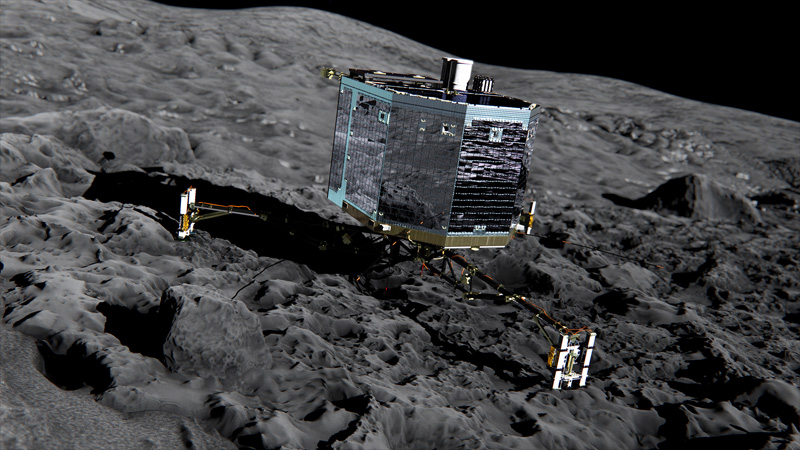
After 10 years of travel and three months orbiting the comet 67p/Churyumov-Gerasimenko, the European Space Agency’s (ESA) Rosetta spacecraft is poised to deliver its landing probe, Philae, to the comet’s surface — a first in history.
You can witness this historic event in the making through a live stream of the event from ESA. Tune in to ESA’s webcast, or come up to Chabot Space & Science Center to share the experience on the planetarium dome. Philae’s expected landing time is around 8:00 AM PST on Wednesday, November 12. Chabot’s doors will open at 6:00 AM.
About seven hours before landing, Philae will be released by its mothership, Rosetta, and then coast the 14 miles to the comet at a leisurely 2 miles per hour. If you are an insomniac, you can watch the live stream at home from midnight to 8:00 AM, though the most exciting moments will likely be around launch and landing.
This is the moment from Star Wars when the rebel pilot drones, “Almost there…” as he prepares to fire torpedoes into the Death Star—and though the nearly three-mile-long comet would be a death star of a sort if it collided with Earth, in this case its orbit never carries it close enough to us to be that kind of a concern.
Upon contact with the comet’s surface, Philae will fire two harpoons to bind itself to the comet. Its landing legs will also absorb the impact of touchdown to prevent the small probe from bouncing back into space. The comet’s surface gravity is so weak that the velocity needed to escape its pull is only 3 feet per second—about the same speed Philae will have upon landing.